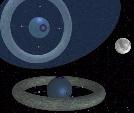
(If the following header does not appear in the Arabic script, you might want to click HERE. The question is, What good is "Unicode" for writing Arabic and Persian?)
يونيكود

A silly question, perhaps, given that the drift of our previous remarks was to doubt that "Unicode" is of much practical use for writing anybody's languages. That is indeed where we are going to come out in the end with the Arabs and Persians as well, but since "Unicode" is always good for conferencing and syposiating and verbiage generally, we can postpone the end almost indefinitely.
Conferencing and symposiating and, above all, standard-mongering. So let us begin by mongering the Arabic-script standard. Here are three huge screen shots that have at least the merit of getting most of the "Unicode" Arabic material together in one place:
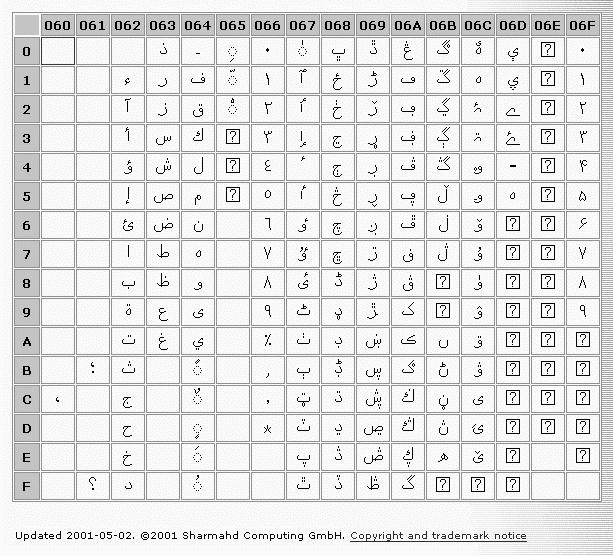
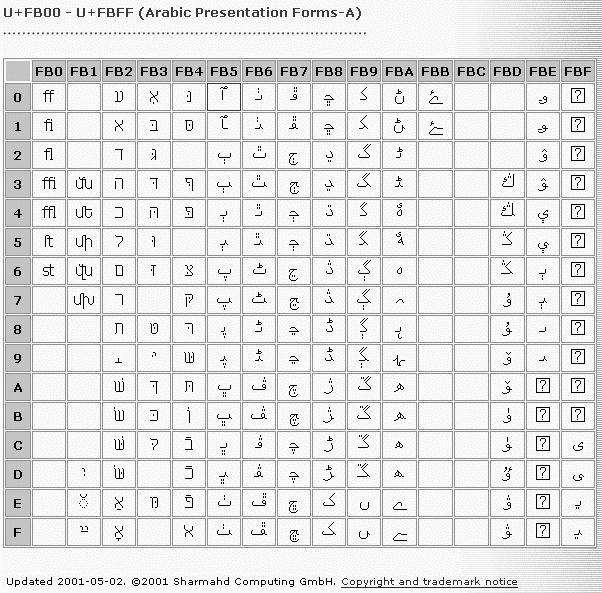
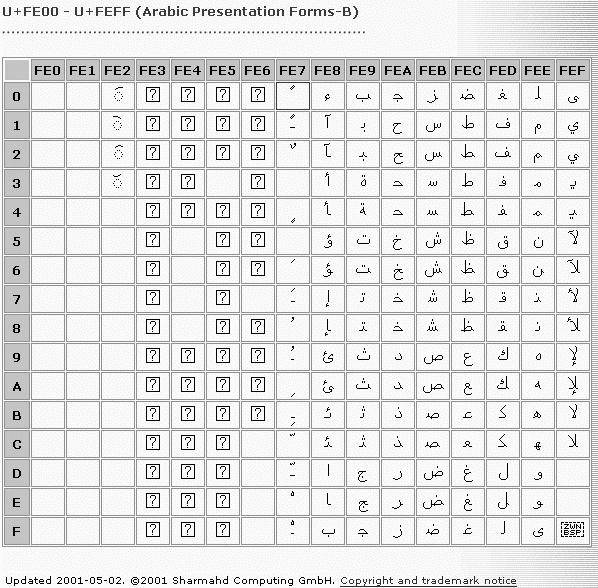
As to
and their "Copyright and trademark notice," well, needless to say they are not the official "Unicode" standard-mongers. If you seek the Definitive Word, look athttp://www.unicode.org/charts/,
which site inspires us mostly to think we might take those shudder-quotes away from around "Unicode" about the time when it can be documented in itself and not in PDF and/or GIF. Speaking of which, it was interesting to cut one of those Java-generated page displays at Sharmahd and paste it into WinWord 9. Pasted as either "unformatted text" or "Unicode unformatted text," everything except the hexadecimal column and row labels just disappeared. Pasted as "HTML text," it looked the same as in IE5, but took forever to load. The fourth try, as "RTF text" made clear what caused the delay. The following picture of the overlap between the HTML paste and the RTF one should explain itself:
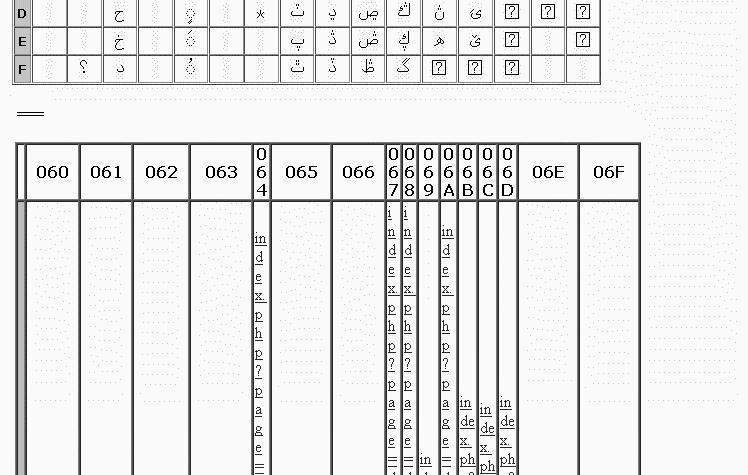
UniPad is free as a beta version; you can download it and examine it yourselves from the URL above. But you cannot use it for writing in the Arabic script, unless you are satisfied with the letters running the wrong way and not being connected. They promise to support bidirectionality in version 1.0, however.
Also be advised that their raster font and your printer may not get along. That ugly picture of the little "Unicode" text at the beginning of the previous discussion was a screen shot from our fax viewer, since to a lowly Canon BJC-2000 UniPad 0.95 prints nothing but blank pages with a single separator line at the top of each page. On the other hand, free is free.
Furthermore, there is a lot of interesting talk on the Sharmahd site, although they never quite explain exactly why anybody would want "a Unicode™ plain text editor for the Windows NT®, Windows 2000®, Windows 95® and Windows 98® operating systems."